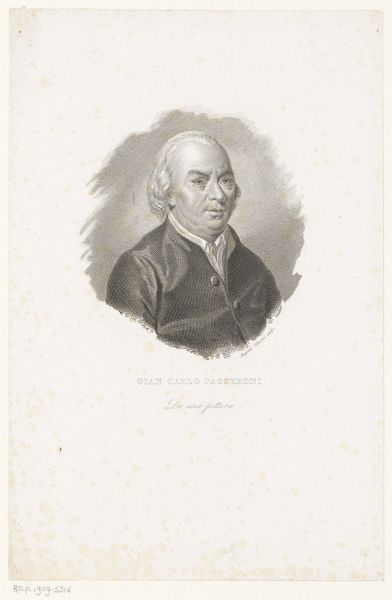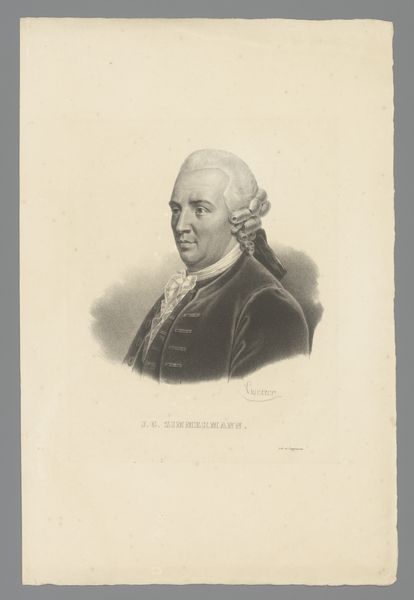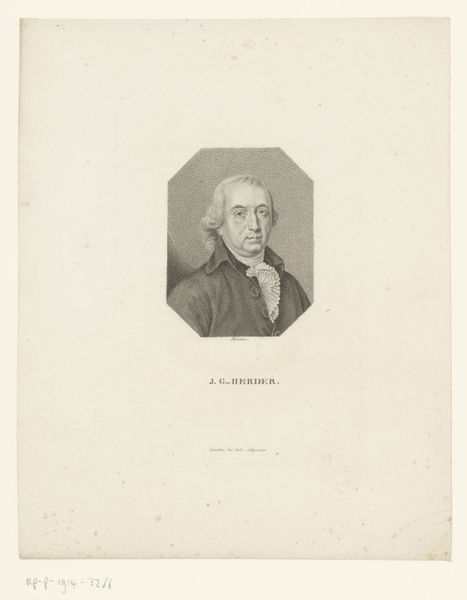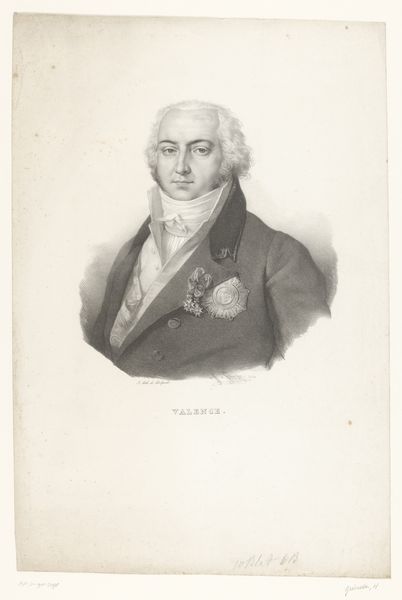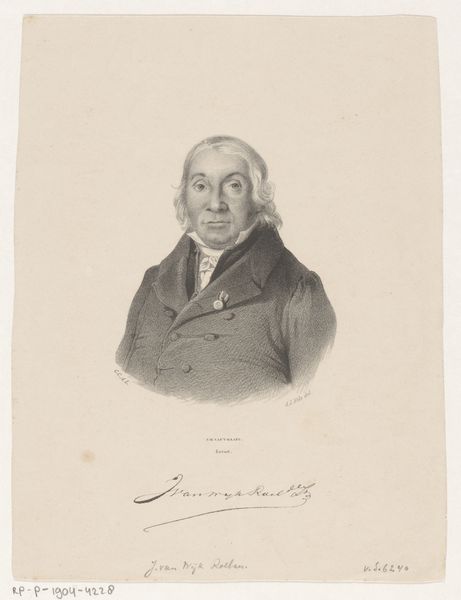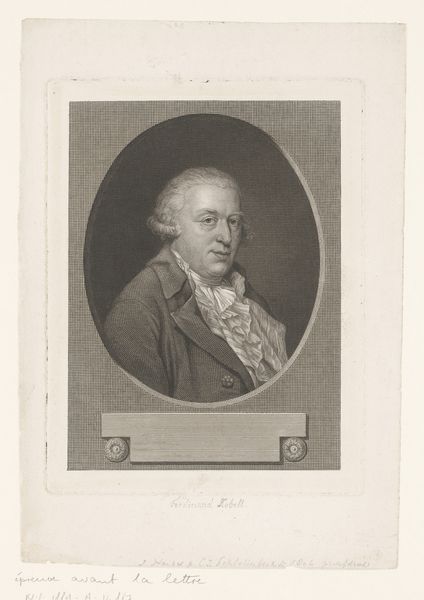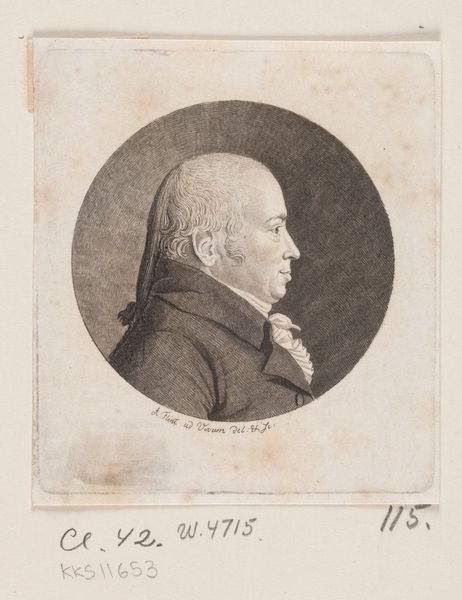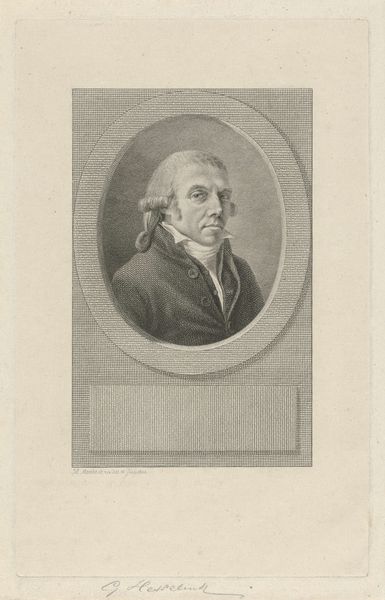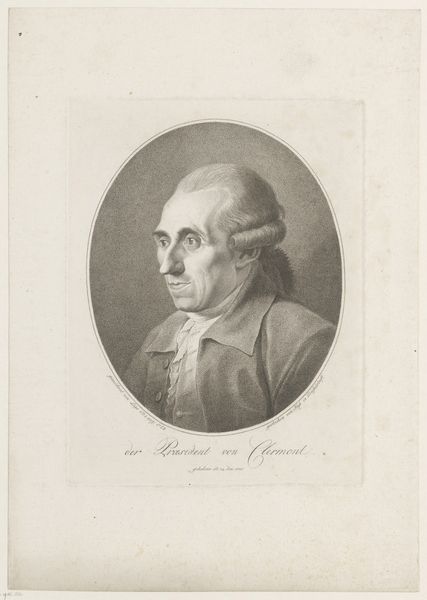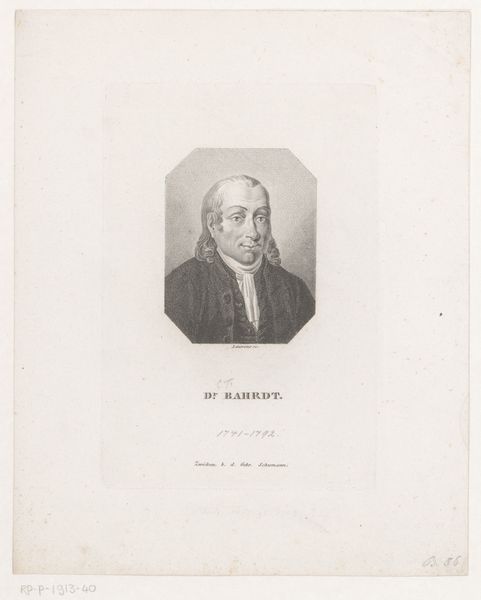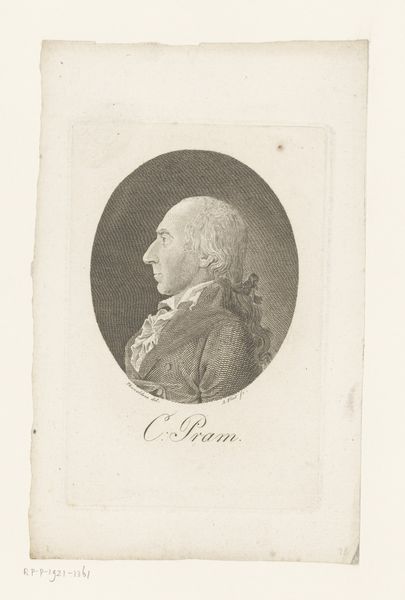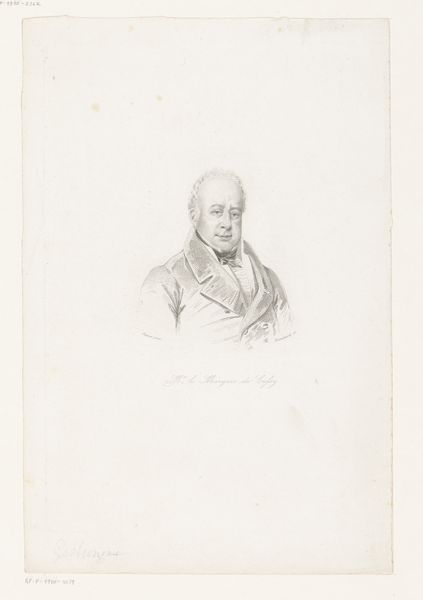
drawing, print, paper, engraving
#
portrait
#
pencil drawn
#
drawing
#
neoclacissism
# print
#
old engraving style
#
paper
#
line
#
portrait drawing
#
engraving
#
realism
Dimensions: height 100 mm, width 89 mm
Copyright: Rijks Museum: Open Domain
Editor: So, here we have a print dating somewhere between 1775 and 1840, titled "Portret van Johann Friedrich Blumenbach" by Ernst Ludwig Riepenhausen. It looks like an engraving on paper, a fairly traditional portrait. What I find striking is the subject's direct gaze. What do you make of it? Curator: Well, beyond the Neoclassical style which emphasizes realism and line, I see a wealth of potential symbolism. Consider the act of portraiture itself during this era. Who was typically memorialized in this way, and what did it signify? It hints at legacy and enduring impact. Editor: So, it's not just a picture of a guy, it's a statement about his importance? Curator: Precisely. And consider Blumenbach's identity: a physician and anthropologist. What symbols might reflect his scientific pursuits or his contributions to the Enlightenment? His gaze might convey authority but also, perhaps, the weight of scientific inquiry. Do you notice anything particular about the way the artist depicts Blumenbach's clothing, the drapery, or the rendering of his hair? Editor: Now that you mention it, there’s a crispness to the lines in his jacket and tie, almost scientific in its precision, while his hair is softer, more human. Curator: Interesting observation. The tension between the rational and the personal is captured within the very details of the portrait, reflecting the shifting intellectual landscape of the time. Editor: I never would have considered all that! I’ll definitely be paying more attention to details in portraits going forward. Curator: It’s always enriching when an artwork encourages us to decode its visual language and understand the historical and cultural values.
Comments
No comments
Be the first to comment and join the conversation on the ultimate creative platform.
